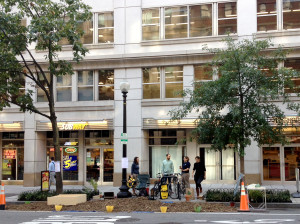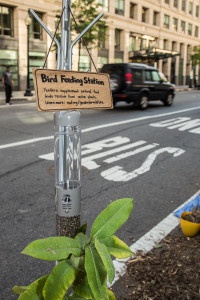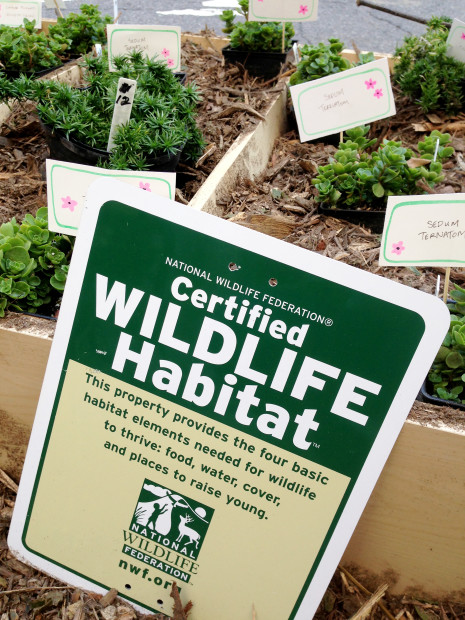We have much more to do and your continued support is needed now more than ever.
Wildlife Get a (Temporary) Home in DC for Park(ing) Day
A couple of months ago I had this idea to convert a parking space in front of National Wildlife Federation’s office into a temporary Certified Wildlife Habitat ® in downtown Washington DC. I had seen the parklets that Casey Trees, a local non-profit, had installed in the past, and thought Park(ing) Day 2013 would be a unique opportunity to show DC residents that it’s easier than they may think to create wildlife habitat in a city – you can even tranform a parking space!


National Wildlife Federation’s Certified Wildlife Habitat program has been helping people take personal action on behalf of wildlife for more than 40 years. This temporary certified habitat we have installed today will join the more than 150,000 certified habitats nationwide, all of which help improve habitat for birds, butterflies, frogs and other wildlife by providing essential of food, clean water, cover and places to raise young. Ranger Rick even stopped by to pay us a visit!
DC has had pop-up retails spaces, art installations, and now a set of pop-up parks across the city…at least for one day. Check out Casey Tree’s map of DC’s Park(ing) Day activities in DC:

On behalf of NWF and our Park(ing) Day team, I would like to extend a special thanks to Nature By Design for allowing us to borrow 44 beautiful native plants to showcase at our site. That’s right, 44 native plants made their way to DC in a hatchback in what one of my NWF colleagues called a “plant clown car.”
Nature By Design is an environmentally responsible full service nursery and garden center located in Alexandria, VA, that specializes in native plants. If you’re looking for native plants in the DC area, you should definitely pay them a visit and tell them I say, “hello.”
I can’t stress the importance of using native plants in your habitat because they adapted to survive in DC given our soil, moisture, and climate. Also, since they are indigenous to a specific region, native plants usually require less maintenance and are welcomed by wildlife, serving an important role in the local ecosystem.
Another thank you in order for C & D Tree Service Incorporated for donating and dropping off mulch for us to use – thanks so much for your help! I’d also like to thank DC Dept of Transportation (DDOT) for officially sponsoring Park(ing) Day 2013 and for streamlining the permitting process.

![]() How have you transformed your urban space into Certified Wildlife Habitat®? Share your stories below in the comments! You may also want to check out this post about urban habitat creation from a D.C. resident.
How have you transformed your urban space into Certified Wildlife Habitat®? Share your stories below in the comments! You may also want to check out this post about urban habitat creation from a D.C. resident.





















